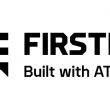IP: infinite possibilities
Whether it’s cellular operators using CDMA for voice and video telephony, office phones unifying communications (voice, video, IM, conferencing), or 911 call centers connecting to computers for mission-critical information such as the caller address and call history, most everything in telecommunications today runs over the Internet Protocol at some point.
Certainly the evolution to IP-centric communication has not been without considerable doubts. Some veteran radio techs still believe that IP networks are too unreliable for mission-critical public-safety communications. The truth is, however, that IP networks are inherently resilient, and can be distributed across multiple sites via a simple peer-to-peer architecture that has no single point of failure. The fault-tolerance, adaptive-routing and disaster-recovery capabilities of IP make it possible to route packets via a different path if the standard path goes down. If a router fails in one part of the network, the data packets can be rerouted automatically to the destination through another path.
Businesses, military and government agencies all rely on IP to transport mission-critical communications via VoIP, video calls/conferences, e-mail and text messaging. Public-safety agencies that depend on land mobile radio (LMR) systems for their mission-critical communications also can benefit significantly from IP. State-of-the-art LMR systems take advantage of IP to provide operators with simplified network expansion, end-to-end digitized voice, improved alarm and performance monitoring, and remote access.
Simplified network expansion. Using an all-IP backhaul network allows the use of commercial off-the-shelf (COTS) components. An all-IP network, using standard routers and switches, allows Ethernet to be used to connect the repeaters at a site to each other, and to repeaters at other sites. Adding a repeater becomes as simple as ensuring that there are available connections on the antenna network and adding an Ethernet cable to the switch at the site.
If you run out of positions on the existing switch, it simply can be replaced by a larger switch. When switches are added or restored to the network, they and the existing switches at all the sites automatically discover each other and start working together. IP connectivity means no proprietary switches that only are available from a single source.
End-to-end digitized voice. An IP-capable repeater is able to take the digitized voice stream out of the air and convert it to IP for connection directly to a switch. No analog audio is sent over the backhaul infrastructure. Digitized voice can be uncompressed, compressed and even encrypted; this does not matter to the underlying protocol. Digitized voice also means greater immunity from radio frequency interference (RFI) and no loss of audio quality as the voice information is sent via the backhaul to another site or the console.
Improved alarm and performance monitoring. The Simple Network Management Protocol (SNMP), a component of the IP Protocol Suite, can be used to monitor the status of the LMR network. SNMP agents expose management data on the site repeaters and other network components as variables. The managing system can request that data or alarm traps be used to send the data automatically if values vary from pre-defined parameters. The SNMP protocol also permits active management tasks, such as modifying and applying a new configuration.
There are a variety of SNMP managers that run on standard computers that can be used to collect the data or alarm traps. These managers can generate e-mail messages to warn of alarm conditions.
Operational statistics can indicate how often the equipment is being used, providing information that can be used to determine if the system has sufficient capacity during busy times. The data collected also can be used to detect trends that show increased usage over a period of time, enabling an operator to anticipate needed expansion before the system becomes overloaded.
Remote access. LMR systems for year systems have relied on analog backhauls to deliver audio and control signals to base stations and repeaters located at remote sites. Service technicians have become proficient in troubleshooting these systems, but that proficiency has developed through years, even decades, of experience deducing what may be the root cause for problems based on reports from users in the field.
To understand one of the potential benefits of IP backhaul to an LMR system, consider the following scenario. A radio supervisor receives an e-mail to his smart phone that informs him there is a problem with one of the radio sites. The e-mail reports that there is low power output and low voltage on the 12-VDC power supply for a repeater at this key site.
By examining this information, the supervisor concludes that most likely the power supply for the power amplifier has failed and needs to be replaced. Just to be certain, the supervisor goes over to his computer that is connected to the radio network and uses a Web browser to examine the network manager. The supervisor confirms the data on the e-mail message and verifies that the other repeaters at the site are working well. Luckily, the supervisor has a spare power supply and loads it, along with a spare power amplifier just in case both modules are bad, in his truck and is off to the site to make the repair, confident that he has the right parts to address the problem.
IP makes it possible to determine the status of equipment at the site without having to travel to that location. With remote access, the radio supervisor was able to go to the site with the right parts to repair the repeater without the users ever realizing there was a problem. How would you like to have the radio system tell you when it needed servicing?
It is important to note, however, that native IP implementations are critical for LMR operators to take full advantage of the performance, reliability and operational improvements that IP provides.
Operators need to be certain that the system they are purchasing is fully IP from the consoles, through the radio network, right up to the repeaters. For systems that are IP by design, replicating the resilience of IP networks with a peer-to-peer communications architecture — with network management built into each component — comes naturally.
Watch out for systems that use an IP gateway that converts data from IP to a proprietary network backbone. The inherent complexity of retrofitting legacy circuit-switched systems adds reliability challenges, as well as complexity in design, implementation and operations. In addition, the expansion of such a system will be more difficult and require proprietary switches and equipment.
A native IP architecture has built-in autonomy and survivability, delivering a system that is reliable, highly available and doesn’t have to involve additional cost or complexity.
It would be in the best interest of any LMR professional to become proficient in the maintenance of IP networks, including switches and routers. Your career will be enhanced and you will be in demand in the industry. People who are unfamiliar with IP networks will be at a significant disadvantage and potentially left behind as the industry moves to new, IP-capable LMR networks. Thinking that IP is just a fad and you will be sticking with your four-wire analog links with tone remote is not a solution for the future. The advantages are too great to ignore.
Sherman Banks is a senior technical sales engineer with EADS Secure Networks North America.
Related Stories
















